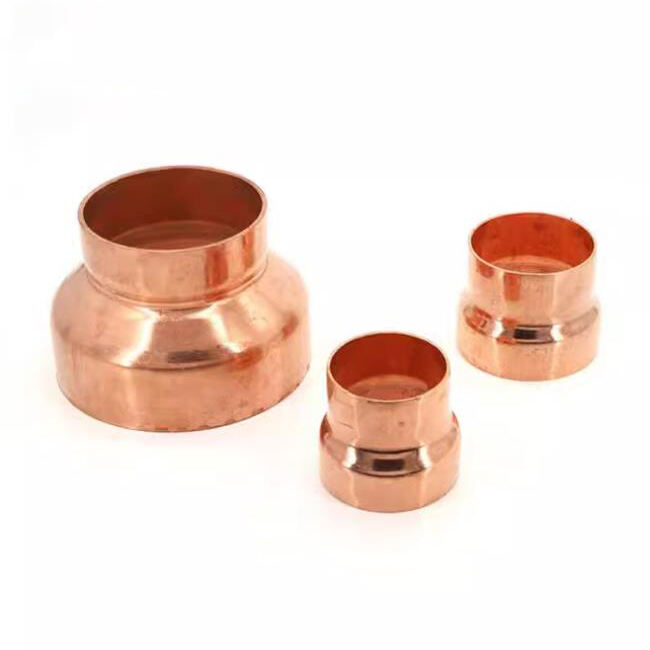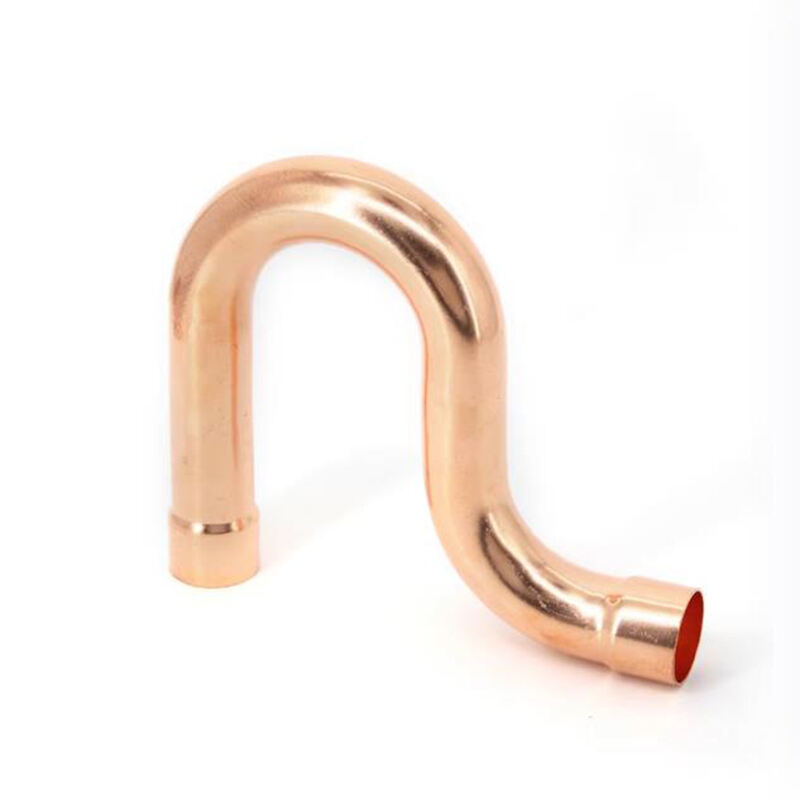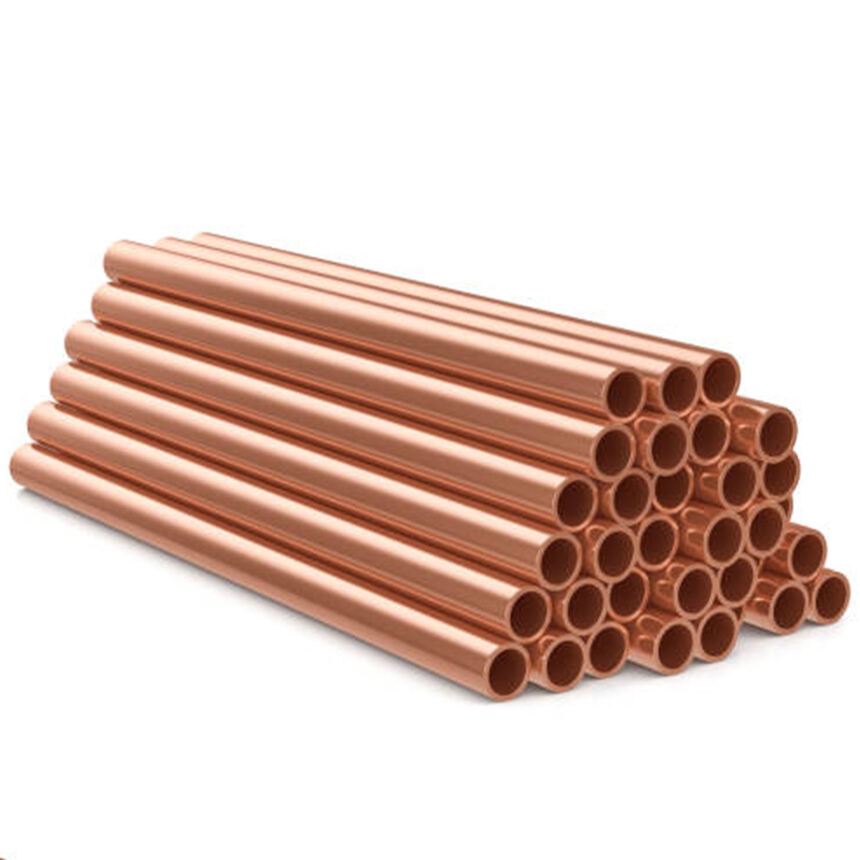The Historical Evolution of Copper Pipes
Ancient Beginnings: From Mesopotamia to the Pyramids
The story of copper pipes starts way back in ancient Mesopotamia around 4,000 to 2,000 BCE when people first started using them for basic plumbing and irrigation needs. The folks living there built pretty impressive drainage systems with copper, showing they knew what they were doing even back then. Fast forward to Egypt, and we find similar things happening. Excavations at sites like King Sahure's tomb reveal that Egyptians actually used copper pipes in their pyramids too, mainly for getting rid of excess water. These early experiments with copper weren't just about building fancy structures though. They helped shape how cities developed over time, made farming possible through better irrigation, and basically created the foundation for all modern plumbing systems. What these ancient civilizations did with copper set things in motion for future generations who would eventually refine and expand upon these early techniques.
Industrial Revolution: The Rise of Modern Copper Plumbing
The Industrial Revolution spanning the 1700s and 1800s was really important for copper plumbing. As factories started producing goods on a massive scale, they began making copper pipes at much higher volumes than ever before. This coincided with cities growing rapidly and needing better water systems throughout town. Manufacturing methods got a lot better during those years, which made copper pipes cheaper and easier to get hold of for builders and plumbers alike. Some notable inventors and engineers worked on improving how copper was processed and shaped into pipes, helping them become standard parts of city infrastructure. What made copper stand out from alternatives like lead or iron? Well, it doesn't rust, resists bacteria growth naturally, and can be soldered together quickly without complicated tools. Metallurgists discovered ways to purify copper more effectively, making it last longer in pipes running through damp basements and underground tunnels. By the late 1800s, most new buildings across Europe and North America were using copper piping, something that continues today despite all sorts of newer materials coming onto the market.
Key Properties and Types of Copper Pipes
Durability and Corrosion Resistance
Copper pipes have a real advantage when it comes to lasting power, often standing the test of time for more than half a century if maintained properly. Industry research backs this up consistently across different settings where copper gets used. When we look at options like PVC or polyethylene, copper just stands out because it doesn't corrode easily no matter what kind of environment it faces. Take PVC pipes for example they tend to break down after reacting to chemicals or getting too much sun exposure, but copper keeps going strong. The numbers tell the same story too failure rates for copper plumbing systems stay way below those of alternative materials. That's why so many builders still choose copper for major infrastructure work that needs to last decades.
Copper Pipe Finned Tubes for Enhanced Heat Transfer
Copper finned tubes really make a difference when it comes to thermal efficiency, especially in things like HVAC systems and various heating setups around the building. The way these tubes are designed with those little fins sticking out increases the surface area available for heat exchange, which means they can move heat around much better than standard tubing. We've seen some pretty impressive results from facilities that switched over from older heating methods to copper finned tubes. One plant reported cutting down on energy costs by almost 30% after making the switch. Looking ahead, manufacturers keep finding new ways to work with copper because nobody else matches its ability to conduct heat so well. As buildings become smarter and more environmentally conscious, copper remains at the forefront of efficient heating solutions where performance meets real world application needs.
Types of Copper Fittings and Their Industrial Roles
Copper fittings play a vital role in industrial settings. We're talking about elbows, tees, couplings and all sorts of other components that make pipe connections work properly. These fittings do specific jobs when it comes to connecting and redirecting pipes throughout complicated systems. Manufacturing them requires careful fabrication work and precise machining, often involving welding or soldering techniques that need skilled hands. Market trends show increasing demand for copper fittings lately, especially as construction projects grow and HVAC systems become more sophisticated. Water supply networks also keep needing reliable connections. The continued interest in copper fittings makes sense given how essential they remain for maintaining functional industrial infrastructure while supporting ongoing tech improvements in piping systems across multiple industries.
Modern Applications of Copper Pipes Across Industries
HVAC Systems and Copper Water Heating Radiators
Copper piping is now a standard feature in most HVAC setups, particularly in those water heating radiators we see throughout homes and office buildings. The way copper conducts heat just works better than many alternatives. Research shows that copper beats out materials like aluminum or steel when it comes to moving heat around quickly inside these systems. What does this mean practically? Less energy gets wasted trying to warm up spaces. That's why so many contractors still reach for copper when installing new heating systems despite all the newer options on the market. Plus, buildings with copper heating tend to produce fewer harmful emissions overall, which makes sense for anyone concerned about building green structures that last.
Plumbing Infrastructure: Reliability in Water Distribution
Copper pipes play a big role in building dependable plumbing systems across both city streets and country roads. What makes them stand out is how they last for decades without rusting or breaking down, which helps keep tap water clean and safe. Take places like New York City and London as examples where plumbers switched to copper lines back in the day, and saw fewer leaks and repair calls over time. Still, things aren't so simple anymore. Rising material costs and new building codes sometimes push municipalities toward alternatives such as plastic PVC pipes that cost less upfront. But many experts still swear by copper because while it may cost more initially, those extra dollars often pay off through years of trouble-free performance in delivering fresh water to homes and businesses alike.
Copper Coiled Water Heaters in Energy-Efficient Design
Water heaters made with copper coils work better because they're designed to save energy during the heating process. Compared to old fashioned tank style models, these newer units actually cut down on running costs and help keep electricity bills lower since they retain heat much better. Many copper coiled heaters come with ENERGY STAR certification too, something that shows just how good they are at saving power. Environmental groups give these products their stamp of approval for good reason. Copper fits right in with green initiatives while still delivering great performance without breaking the bank on monthly expenses.
Sustainability and Environmental Benefits
Recyclability: Copperâs Role in the Circular Economy
Copper has a remarkable recyclability rate, with more than 90% of copper being reused at the end of its lifecycle, playing a crucial role in the circular economy. This high percentage not only reduces the need for new mining activities but significantly decreases energy consumption and carbon emissions associated with copper production. For instance, recycling copper saves about 85% of the energy required to produce new copper, leading to substantial environmental benefits. Various organizations, such as the International Copper Association, actively promote copper recycling initiatives, highlighting copper's sustainable advantages in the manufacturing sector. These efforts are essential as they encourage more industries to adopt eco-friendly practices, supporting global sustainability goals.
Reducing Microplastics: Why Copper Outperforms Plastic
More people are starting to worry about all those tiny plastic particles floating around in nature, which makes copper pipes look pretty good compared to regular plastic ones. Copper doesn't contribute to plastic pollution problems and offers a much safer option for moving water through homes and buildings. Research shows these microscopic plastics can actually harm human health once they get into tap water supplies, something we definitely want to avoid over time. Unlike plastic options, copper piping systems don't introduce this danger, making them clearly better at keeping water clean and safe. Many governments across Europe and North America have already started passing laws restricting plastic use in plumbing infrastructure, pushing industries toward materials like copper instead. Switching to copper isn't just about protecting public health either it fits right into the bigger picture of cutting down on plastic trash and doing what we can for the planet's future.
Copper vs. Plastic Pipes: Safety and Longevity
Fire Safety: Copperâs Non-Combustible Advantage
Copper doesn't catch fire, which makes it a much safer choice when it comes to construction materials, especially where wildfires are common. Plastic pipes tell a different story entirely they melt down and give off dangerous smoke during fires, while copper stays put even when things get really hot. Fire statistics back this up too buildings that have copper piping tend to face far fewer fire dangers than ones relying on plastic alternatives. Most modern building rules actually prefer copper because of how well it stands up against flames. Take California for example, where strict fire codes mandate the use of materials that won't combust, making copper almost mandatory in certain zones. Beyond just meeting regulations, many contractors choose copper simply because knowing their buildings are less likely to go up in flames gives them sleep at night.
Copper Flare Tee Fittings in High-Pressure Systems
Copper flare tee fittings keep working reliably even under tough conditions in gas and liquid systems operating at high pressure. When put against plastic alternatives, copper simply holds up better over time. Field tests from oil refineries and chemical plants show copper fittings last longer and stop leaks better than most plastic options available today. The manufacturing process follows strict industry guidelines, so these fittings pass all the necessary safety checks before installation. For sectors like pharmaceuticals or food processing where even small leaks could cause major problems, copper remains the go to material despite higher upfront costs. Many plant managers report fewer maintenance headaches after switching to copper fittings in their critical infrastructure.
Long-Term Cost Efficiency of Copper Infrastructure
Looking at the full picture when comparing materials for piping systems shows copper comes out ahead financially compared to plastic options. Sure, upfront costs for copper are generally higher than plastics, but what most people overlook is how much money gets saved down the road because copper just lasts longer without needing repairs or replacements. Industry data from plumbers and builders across North America consistently points to copper installations paying off handsomely in the long run thanks mainly to their ability to resist corrosion and maintain structural integrity even under tough conditions. Beyond just lasting longer, there's also the fact that copper installs faster which saves labor hours, plus it has better environmental credentials these days with recycling rates way above other materials. And let's not forget about property values either many real estate experts will tell homeowners that houses with copper plumbing tend to fetch better prices on the market. All these factors combined mean copper isn't just meeting today's requirements, it's actually setting buildings up for decades of reliable service while keeping maintenance budgets low.









